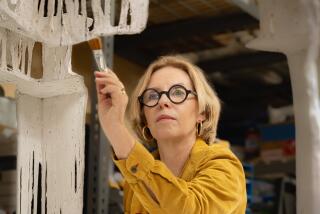Some Restorations Need Perfection
- Share via
After reading Robert Rosen’s comments about me in Counterpunch (“Unity, Not Sour Grapes, Needed to Restore Classic Films,” Calendar, Dec. 28--written in response to Jeffrey Wells’ piece about Columbia’s restoration of “The Bridge on the River Kwai,” which, according to the headline, “Raises the Issue of How Good Is Good Enough?”), I tried to understand where he was coming from.
It seems logical that he would offer rebuttal in the form of politicking, given that Columbia is funding restorations at UCLA. As director of the UCLA Film and Television Archive, it is in his interest to defend such a benefactor.
By commenting that the “Kwai” restoration is a “glorious tribute to the accomplishments of David Lean,” Rosen brings to light the greatest problem in film preservation. Many people seem to neither fully understand what film can and should look and sound like when restored, nor what restoration is about technically.
Except in rare instances, preservation is not a “vast collaborative partnership.”
Film preservation and restoration are two different activities and must be viewed in two distinct ways. Most films are generally not going to be placed back into theatrical distribution. One individual can oversee many projects, and if the quality level is 90%, that’s great. You can’t hold up a production line for a minor flaw that will never be seen on video or television.
While some studios do it better than others--and some not very well at all--a few handle the preservation and restoration of their films exceedingly well, on a daily, routine in-house basis. But let’s not place a halo over the studio logos. What they’re saving is not only our film heritage but their long-term assets.
It is those few titles--tens out of thousands by all rights, for the quality that went into them and to the lasting honor of those craftspeople who created them--that must be saved to the finest degree of human and mechanical perfection. If our standards slip, these films will never again be seen as they were meant to be.
It had been my intent to say nothing about “Kwai.” When asked to comment, I was laudatory, hoping problems had been fixed. That Columbia preserved the film, whatever the quality, is a basis for thanks. The issue, however, is whether Columbia’s restored “Kwai” would have won the approval of its creator, David Lean. This is what restorations are supposed to be about.
Based on what I saw last February as the restoration was near completion, I can assure you that David Lean--with whom I had a working relationship for four years--would have strongly disapproved because it changed his film and did not fix the problems that existed. He was not easily satisfied. I can only think of his reaction three years ago after watching 20 minutes of Columbia’s first aborted video version of “Lawrence of Arabia.” He walked out.
I did the basic research on “Kwai,” including a week in London crawling through vaults, viewing and testing materials. I spent extensive time going over every facet of the restoration with David. I had no deal with Columbia on the groundwork; I worked gratis. It was their decision to use me or not as they saw fit.
My inventories and findings went to the studio. The reality is that I would have done things differently, doing more research, paying more attention to the picture elements and not taking liberties with the sound elements.
David wanted certain elements upgraded. There were also new problems that should have been fixable. This would have meant, among other things, going through every element in 202 cans of picture negative sitting in London vaults.
But you don’t hire people to go through 202 cans. To make something like that work, you need a personal commitment to the project, not simply financial or operational. You must do it yourself or with a select few.
The restorations with which I have been involved have been out of the norm. “Lawrence” was done during a 26-month period. “Spartacus” entailed 10 months of full-time obligation.
At Universal, we had the support of its incredibly knowledgeable vault team. They may have thought us slightly batty for opening and checking over 1,800 cans of “Spartacus” materials. Their professionalism made a difference on the screen.
An “unnamed studio source” in the original Calendar article said that I had been cut out of the loop on the “Kwai” restoration by Columbia executives because they felt I “may be too demanding in my standards.” To that I say, thank you. The legacy of David Lean deserves no less.
More to Read
Only good movies
Get the Indie Focus newsletter, Mark Olsen's weekly guide to the world of cinema.
You may occasionally receive promotional content from the Los Angeles Times.










